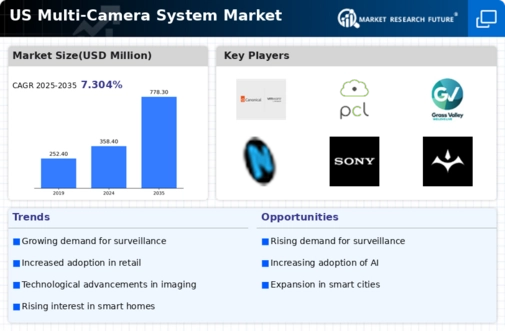The US Multi-Camera System Market is characterized by a rapidly evolving landscape marked by technological advancements and increasing integration of multi-camera setups in various applications including broadcasting, live events, and video production. Competition in this sector is fierce, driven by the demand for high-quality imaging, ease of use, and the ability to deliver sophisticated visual content. Key market players are investing significantly in research and development to innovate and create next-generation multi-camera systems.
The market is influenced by changing consumer preferences, which are shifting towards more dynamic and immersive viewing experiences. Along with a growing emphasis on cloud solutions to enhance storage and processing capabilities, manufacturers are focusing on developing products that leverage artificial intelligence and machine learning to improve functionality and enhance user experience. Canon is a well-established player in the US Multi-Camera System Market, known for its high-quality imaging solutions and extensive product range.
The brand enjoys a strong presence due to its reputation for reliability and performance, particularly in professional videography and photography. Canon's strengths in this market stem from its innovative technology, such as advanced autofocus systems and superior lens designs, which cater to the needs of modern content creators. Additionally, Canon enhances its market position through strategic partnerships and collaborations that broaden its service offerings.
The company’s robust distribution networks and customer service are also pivotal in maintaining consumer trust and loyalty, allowing it to effectively compete with other market players in the multi-camera segment.Point Cloud has emerged as a notable entity within the US Multi-Camera System Market, focusing on the integration of cutting-edge technologies in spatial computing and image capture. The company specializes in developing systems that utilize multi-camera arrays for applications such as 3D mapping, augmented reality, and virtual reality content creation.
Point Cloud's strengths lie in its innovative product line that includes advanced sensors and software solutions designed to provide high-resolution imagery and data capture capabilities. The firm is actively pursuing strategic growth through partnerships and potential mergers that align with its vision of expanding its footprint in the US market. By leveraging its technological advancements and focusing on niche applications, Point Cloud aims to enhance its competitive stance while meeting the specialized needs of various client segments within the multi-camera system landscape.























